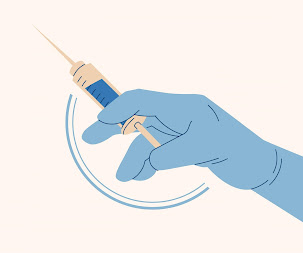Addition of ibrutinib (Imbruvica) to a standard chemotherapy regimen can enhance survival for some younger individuals with a specific form of diffuse large B-cell lymphoma (DLBCL), as per the reanalysis of data.
The findings, published in the Journal Cancer
Cell, come from a new analysis by researchers at the USA’s National Cancer
Institute (NCI) of a previously conducted phase-3 clinical trial.
Diffuse large B-cell lymphoma is the most
common type of lymphoma, accounting for 40 percent of lymphoma cases at the
global level. The individuals with the diffuse large B-cell lymphoma are
typically treated with R-CHOP, which includes vincristine, cyclophosphamide,
doxorubicin, prednisone, and the monoclonal antibody rituximab. But R-CHOP
therapy is not useful for everyone with diffuse large B-cell lymphoma.
Ibrutinib
(Imbruvica) was the first targeted therapy to be assessed for the treatment of
diffuse large B-cell lymphoma. It inhibits the function of Bruton tyrosine
kinase, a protein that is involved in the growth and survival of B cells.
Cancerous cells of the ‘active B cell-like’ (ABC) subtype of diffuse large
B-cell lymphoma require this protein in order to survive.
A trial named PHOENIX was launched in the year
of 2013 to assess the effectiveness of adding ibrutinib to R-CHOP therapy for
newly diagnosed patients which do not have the ‘germinal centre B cell–like’
(GCB) type of diffuse large B-cell lymphoma.
Outcomes published in 2019 demonstrated that
overall, combination of ibrutinib and standard chemotherapy regimen did not
help patients with non-germinal centre B cell–like diffuse large B-cell
lymphoma in order to live longer.
Although, patients aged under 60 years did
have improved event-free survival and overall survival, but as this was a
secondary endpoint of the trial its significance has remained controversial.
Therefore, in this latest study, researchers
of the National Cancer Institute as well as their collaborators evaluated the
tumour biopsy samples from patients on the trial.
They have now concluded that patients aged under 60 years with MCD and N1, specific genetic subtypes of non-germinal centre B cell–like diffuse large B-cell lymphoma, had an exceptional response to the combined therapy or treatment.
All of those patients are alive without disease 3 years following diagnosis.
According to Study co-author Dr Wyndham H.
Wilson, senior investigator in the Lymphoid Malignancies Branch, “This new
analysis offers a compelling rationale for health specialists to consider
addition of ibrutinib (Imbruvica) along with the standard chemotherapy for the
initial therapy of younger individuals with non-germinal centre B cell–like
diffuse large B-cell lymphoma.”
Following the completion of genetic analyses
on tumour samples from 773 of the 838 participants and determining their
subtypes, researchers found that most of the benefit from ibrutinib (Imbruvica)
was in patients with ABC diffuse large B-cell lymphoma.
Out of the 4 genetic subtypes of ABC diffuse
large B-cell lymphoma, it was found that those patients aged 60 and under with
the MCD subtype had 3-year event free and OS rates of 100 percent with
ibrutinib (Imbruvica) and R-CHOP. This is compared to 3-year event free
survival of 48 percent and 3-year OS of 69.6 percent with R-CHOP alone.
Younger individuals with the N1 subtype also had 3-year event-free and OS (overall survival) rates of 100 percent with ibrutinib (Imbruvica) and R-CHOP, in comparison to 3-year event-free and OS of 50 percent with R-CHOP alone.
Individuals with the genetic subtype named BN2 did not benefit from the addition of the ibrutinib (Imbruvica), but this subtype already has an 82 percent OS rate with R-CHOP alone.
Ibrutinib (Imbruvica) was also effective for some other younger individuals with the non-germinal centre B cell–like diffuse large B-cell lymphoma, although the researchers were not able to specify benefits for the A53 subtype.
According to Dr Louis M. Staudt, chief of the Lymphoid Malignancies Branch in the Center for Cancer Research at NCI, “For years we have only had chemotherapy and rituximab to offer these individuals (patients). Now, we expect that the addition of ibrutinib (Imbruvica) to current therapy may provide younger patients a better chance of surviving this aggressive cancer.”












